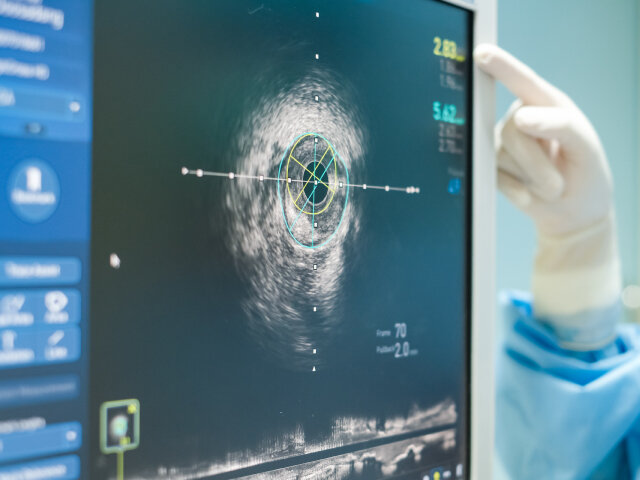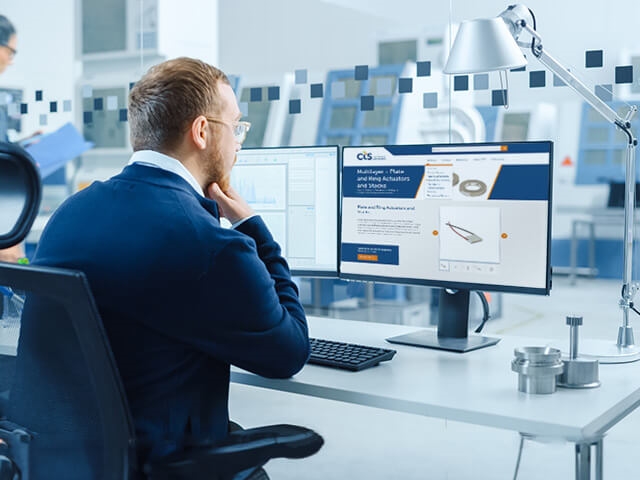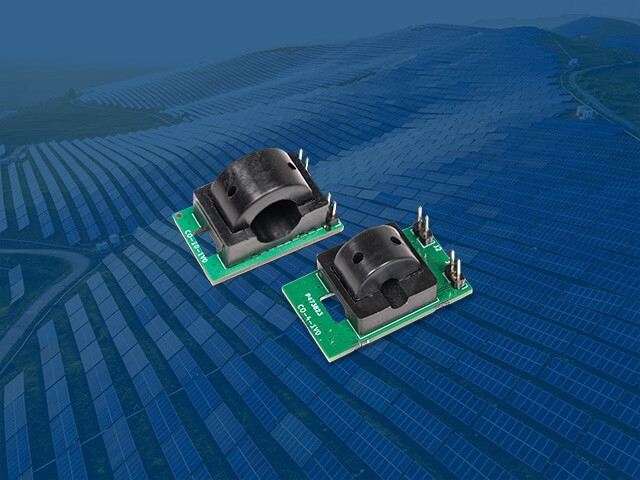Piezoelectric Transducers for Intravascular Ultrasound (IVUS)

How Piezoelectric Transducers Enable Intravascular Ultrasound (IVUS)
Intravascular Ultrasound (IVUS) is a medical imaging technique widely used for diagnosing coronary artery diseases. IVUS is carried out using a special catheter fitted with a small piezoelectric ultrasound transducer probe. Using ultrasound imaging technology, it is possible to visualize the inner wall of blood vessels to detect lesions and plaque, as well as to monitor the progress of treatments such as angioplasty and the placement of stents. The physician steers the ultrasonic transducer probe from outside the body through angiography catheters and into the blood vessel branch that is to be imaged.
How does IVUS work?
 IVUS uses well-known sonar techniques to generate intravascular images. The catheter probe consists of a piezoelectric transducer that utilizes the converse piezoelectric effect to transform an electric input into pulses of ultrasound at high frequencies, typically 20-60 MHz. Since imaging resolution is inversely proportional to the frequency of the transducers, the high frequency is required to image the fine structures of the artery. The downside is a very shallow imaging depth, because high-frequency waves get damped rapidly by the tissue. The ultrasound is reflected by the blood vessel wall, muscles, deposits etc., and the reflected sound is captured by the same transducer, which subsequently converts it into an electrical signal via the direct piezoelectric effect in order to recreate a cross-sectional image. Although transducer probes using multi-element phased arrays exist, typical IVUS catheters are rotational, meaning that the 360° view of the artery is generated by continuously rotating a single element piezoelectric transducer.
IVUS uses well-known sonar techniques to generate intravascular images. The catheter probe consists of a piezoelectric transducer that utilizes the converse piezoelectric effect to transform an electric input into pulses of ultrasound at high frequencies, typically 20-60 MHz. Since imaging resolution is inversely proportional to the frequency of the transducers, the high frequency is required to image the fine structures of the artery. The downside is a very shallow imaging depth, because high-frequency waves get damped rapidly by the tissue. The ultrasound is reflected by the blood vessel wall, muscles, deposits etc., and the reflected sound is captured by the same transducer, which subsequently converts it into an electrical signal via the direct piezoelectric effect in order to recreate a cross-sectional image. Although transducer probes using multi-element phased arrays exist, typical IVUS catheters are rotational, meaning that the 360° view of the artery is generated by continuously rotating a single element piezoelectric transducer.
Which piezo elements can be used for IVUS?
Bulk (polycrystalline) piezoelectric ceramics have been and are still widely used for ultrasound transducers in IVUS systems as they provide good performance at low cost. With the introduction of single crystals, it is now possible to design small aperture ultrasound transducers for IVUS with improved sensitivity. The components made from piezoelectric single crystals provide higher electromechanical coupling coefficients, resulting in broader bandwidth and higher sensitivity. Consequently, the signal to noise ratio can be improved, and combined with the higher frequency capability, a better resolution of the imaging can be achieved.
An IVUS probe is typically built around a single element of piezo composite with a cross-section around 0.5 mm x 0.5 mm, allowing it to fit into a catheter. CTS manufactures and supplies bulk and single crystal composite elements on backing layer, with or without matching layer for an easy integration into IVUS probes.
Material solutions for IVUS Piezoelectric Transducers
| Parameter | PZT Piezoceramic (3202HD) | Piezoceramic 1-3 Composite (3202HD) | Single Crystal | Single Crystal High-Frequency Composite |
|---|---|---|---|---|
|
Frequency (On Backing Layer) |
Up to 40 MHz | Up to 30 MHZ | Up to 75 MHz | 40 to 60 MHz |
|
Electromechanical Coupling (Thickness) |
~55% | ~70% | ~60% | ~80% |
| Bandwidth | ~40% | ~60% | ~45% | ~85% |
| Features |
- High Density for Thin Plate Processing - Cost-Effective Solution |
- Improved Coupling and Directivity | - High Sensitivity |
- Narrow Beam - Very High Sensitivity |
Customization and value-add options
Each company that CTS partners with has unique needs that require custom solutions. Our internal team of engineers and subject matter experts work directly with customers, designing solutions that meet demanding specifications. Typical customization opportunities for piezoelectric elements in IVUS applications are:
Part size and frequency: Dimensions can be adapted to the particular application, available space and target performance.
Backing layers: Due to the extremely low thickness of the active material, a backing layer is required to handle the components. A typical design uses conductive epoxy, but thickness can be adapted to a given application.
Matching layers: CTS offers in-house capabilities for the application of parylene, which is a common choice as matching layer for IVUS application.
Narrow thickness frequency tolerance: CTS’ precision grinding expertise enables the manufacturing of components with a tight frequency tolerance. For the very thin high-frequency composites, we can reach ±10% for consistent operation of interchangeable transducers.
September 17, 2024






